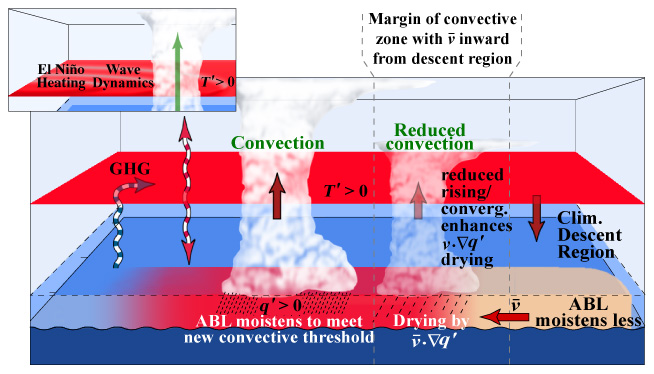· Related model results for the Caribbean/Central-American region
The Upped-ante Mechanism and the Anomalous Gross Moist Stability (Rich-get-richer) Mechanism
The Upped-ante Mechanism and the Anomalous Gross Moist Stability (Rich-get-richer) Mechanism
(see also: Neelin et al. 2003)When the tropical troposphere warms, for instance from remote teleconnection effects during El Niņo or increased infrared trapping by greenhouse gases during global warming, the atmospheric boundary layer (ABL) must have more moist static energy to become convectively unstable. Most of this extra energy must come from additional moisture. This additional necessary moisture is analogous to a higher ante required for poker players to enter a given round. On certain edges of convective zones, where low-level flow brings air from non-precipitating regions, this extra moisture requirement is too high to continue to allow for much convection compared with neighboring regions. This process leading to drought conditions at certain convective margins is termed by Neelin et al. 2003 as the "upped-ante" mechanism (Fig.).

click on image for larger view
On the other hand, at the centers of convective zones, higher relative humidities and increased moisture inflow can actually lead to increased convection. Higher moisture levels cause a reduced gross moist stability in convective zones, leading to an increase in precipitation there. In effect, there must be more low-level convergence and high-level outflow to maintain a net transport of energy out of the convective zones. The increased convergence of moist air is accompanied by larger precipitation amounts. This mechanism for increased precipitation near the centers of convective zones is termed by Chou and Neelin (2004) as the anomalous gross moist stability, or "rich-get-richer", mechanism.